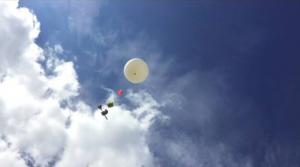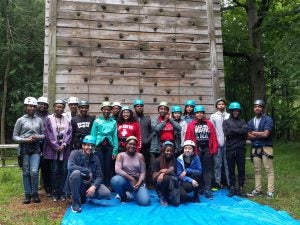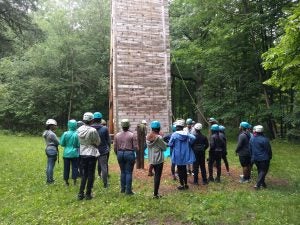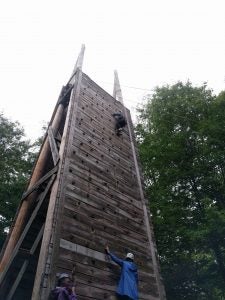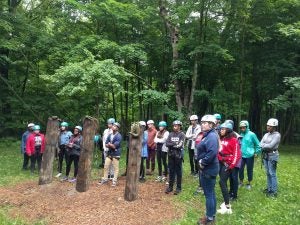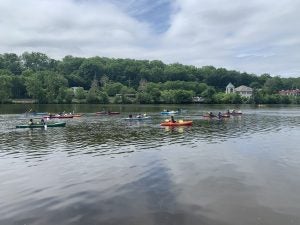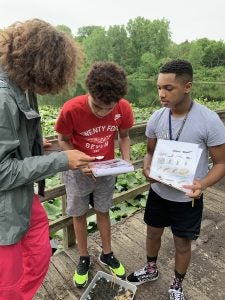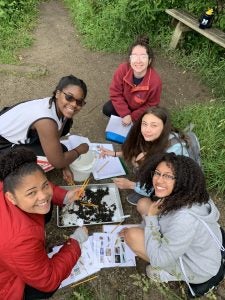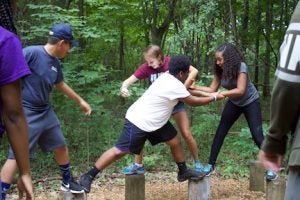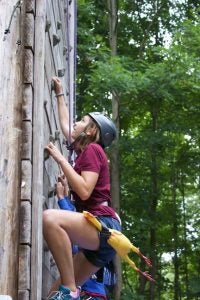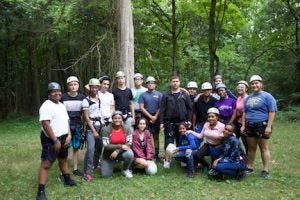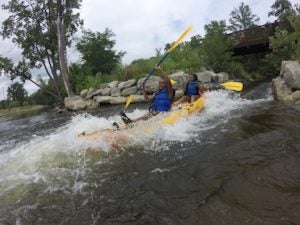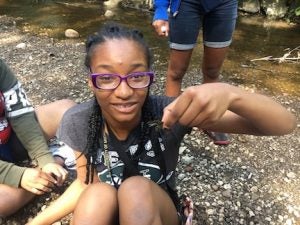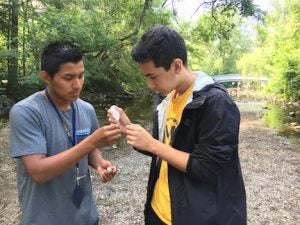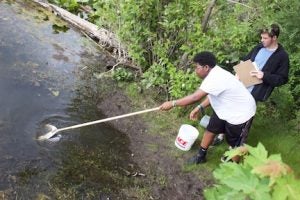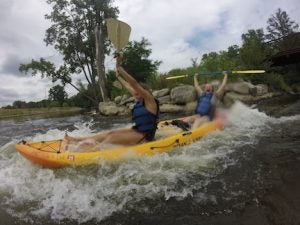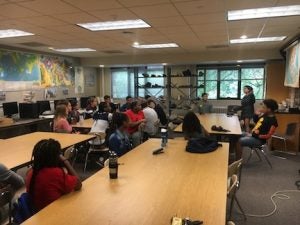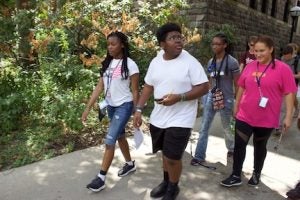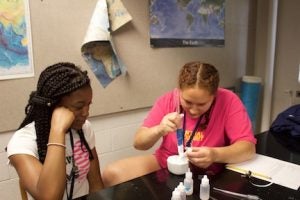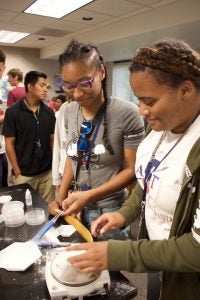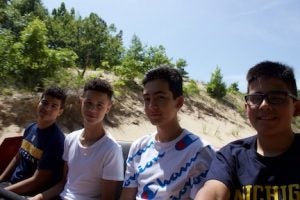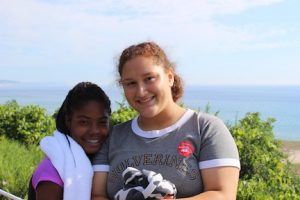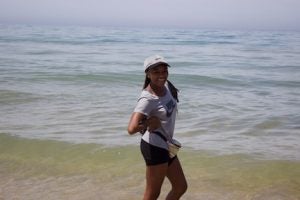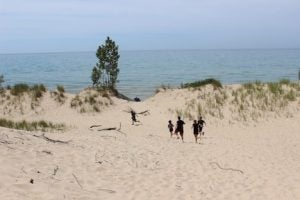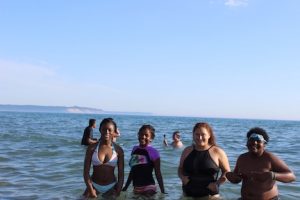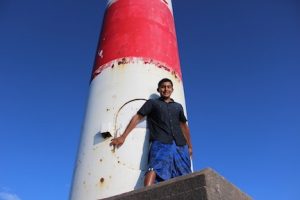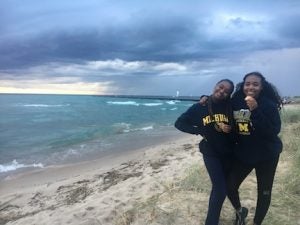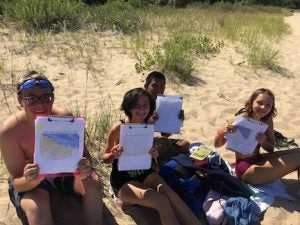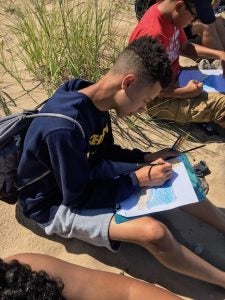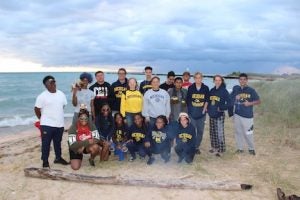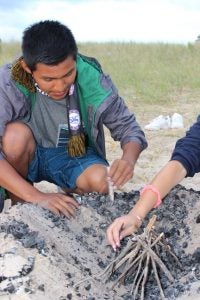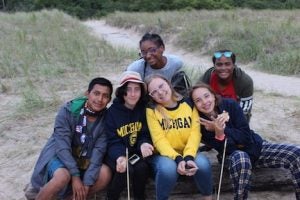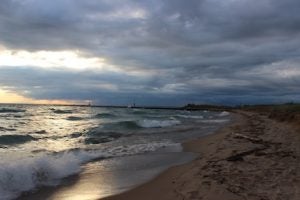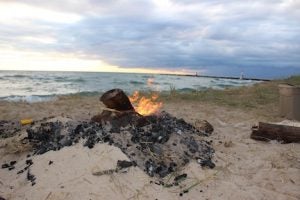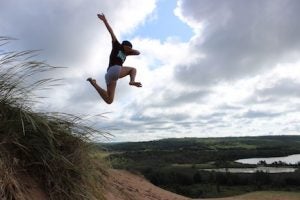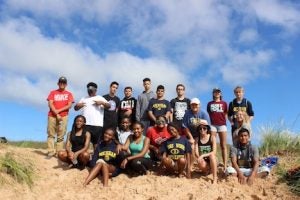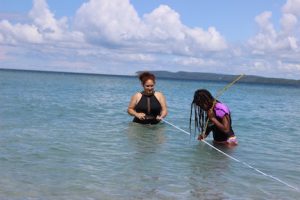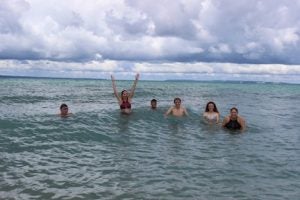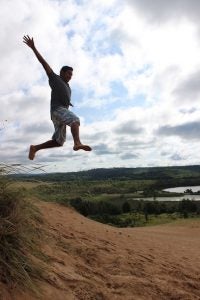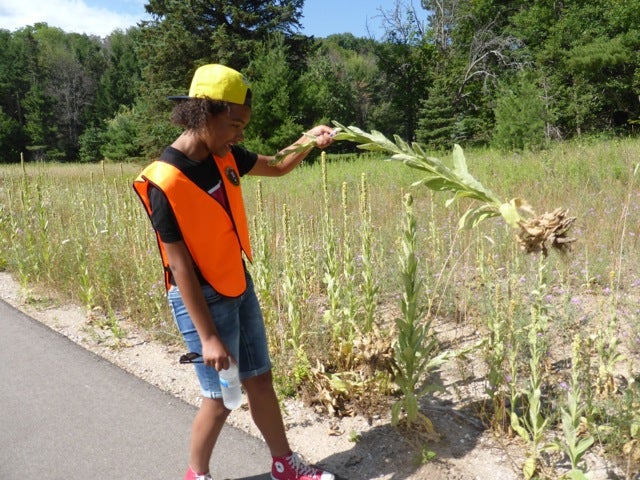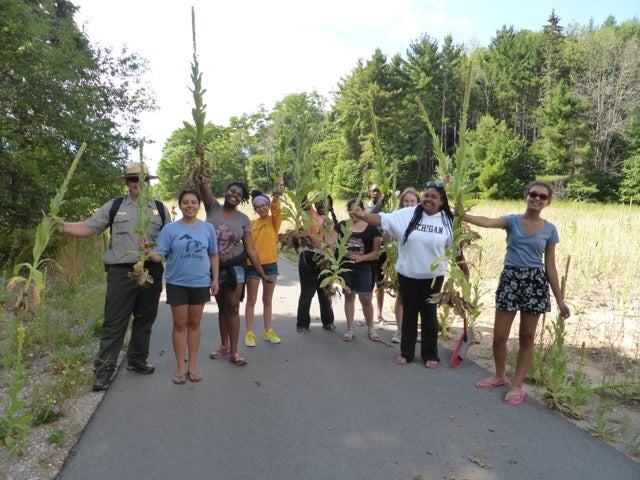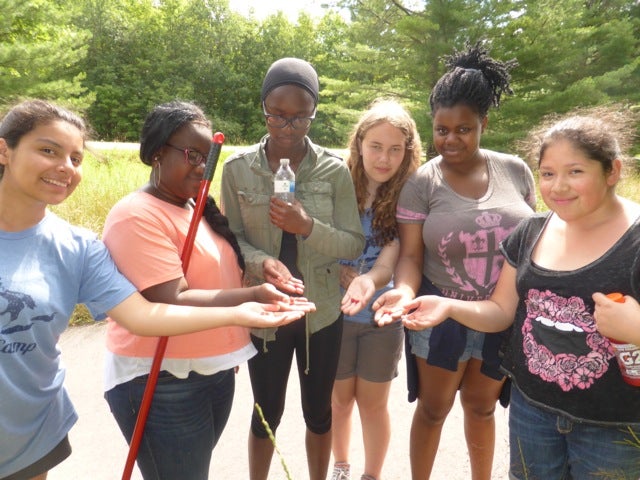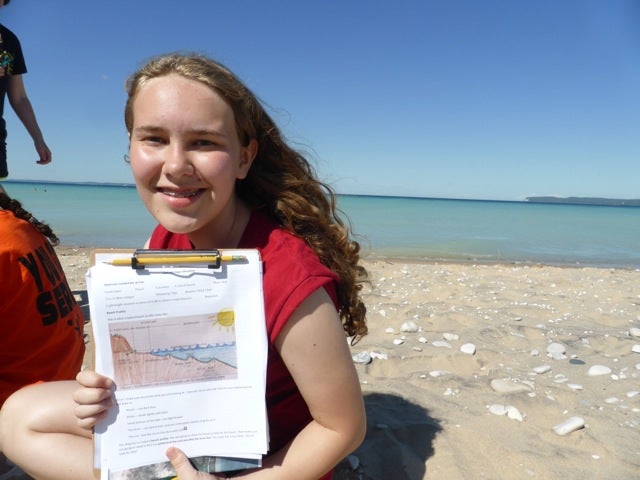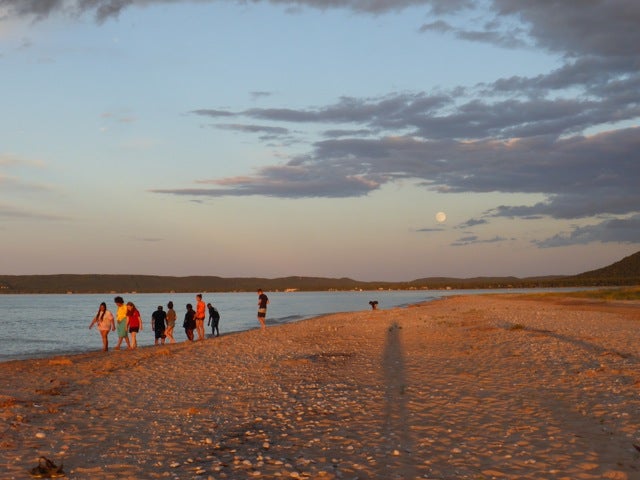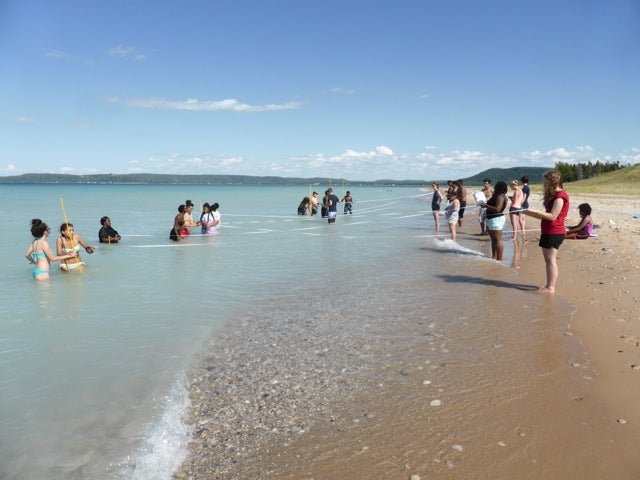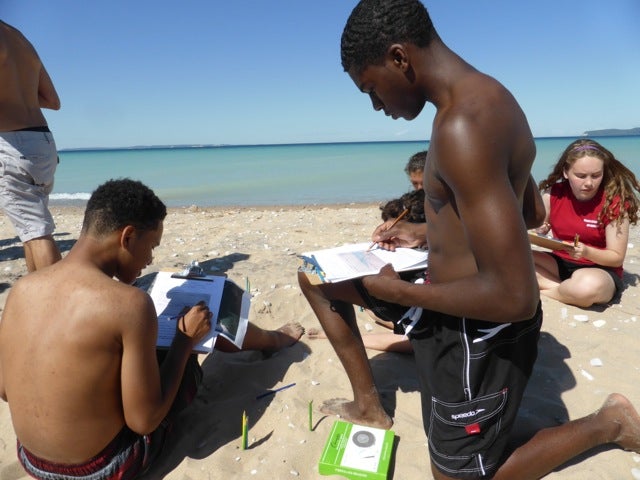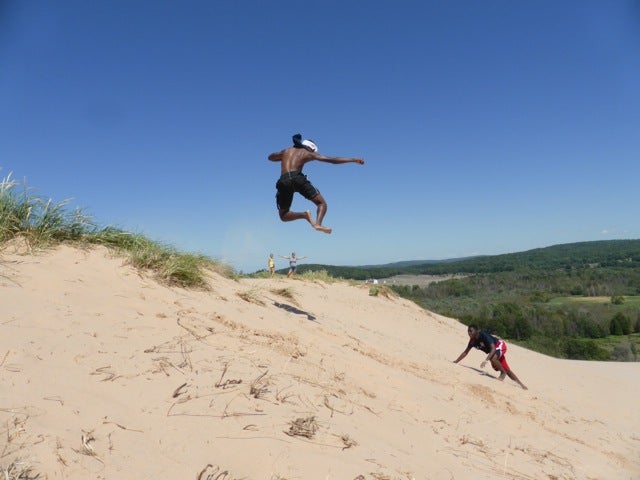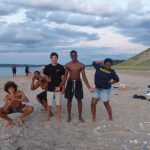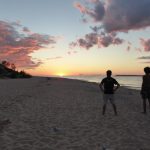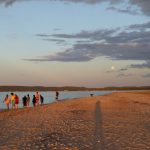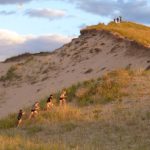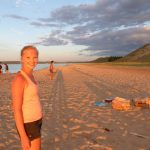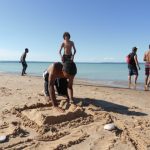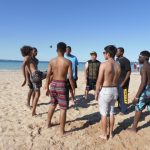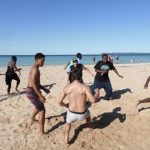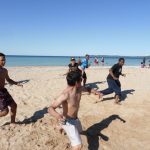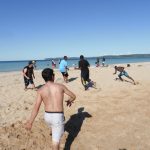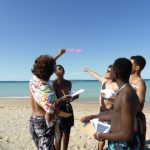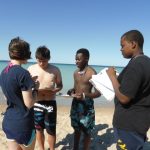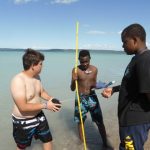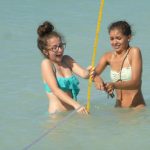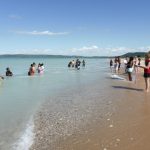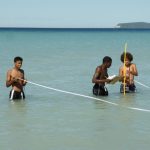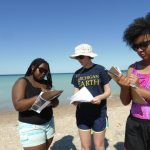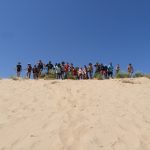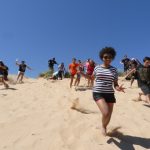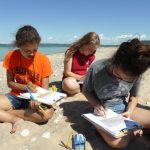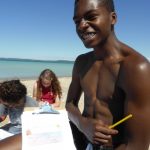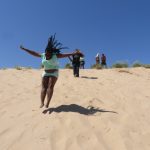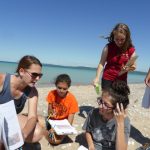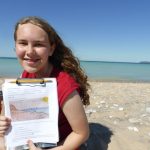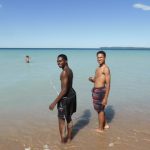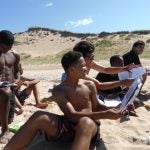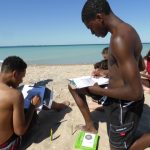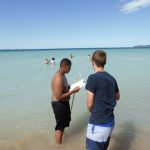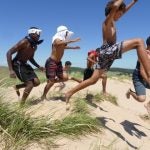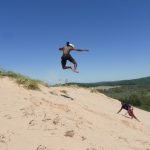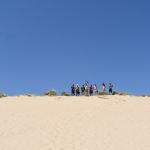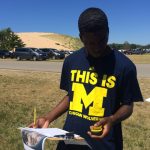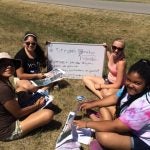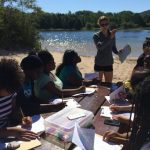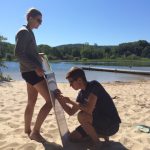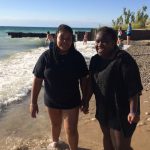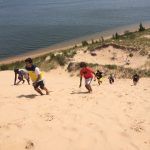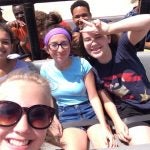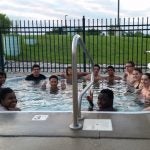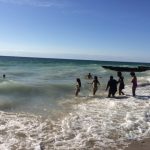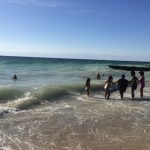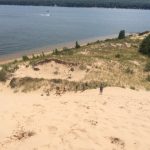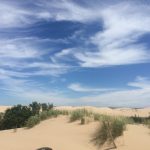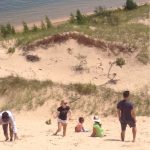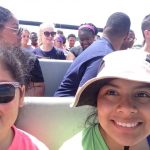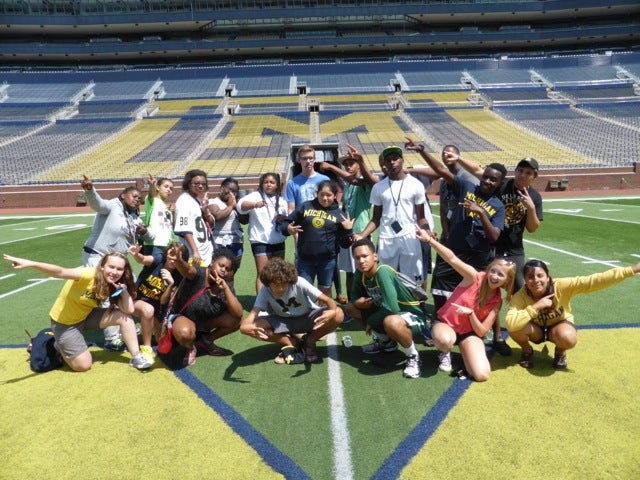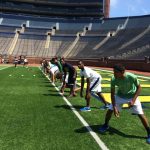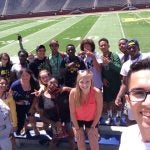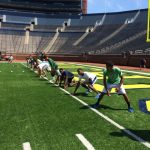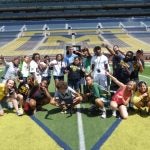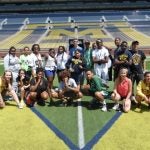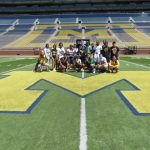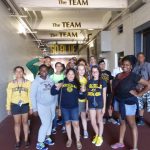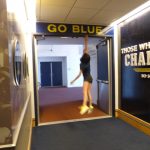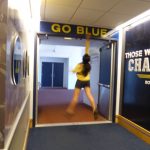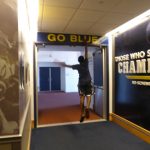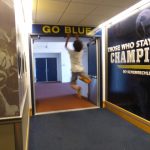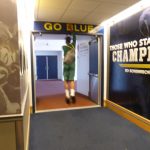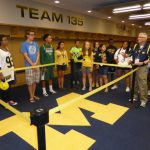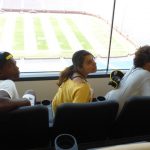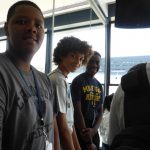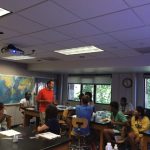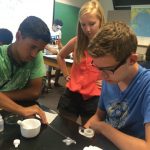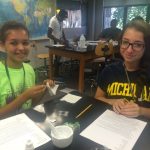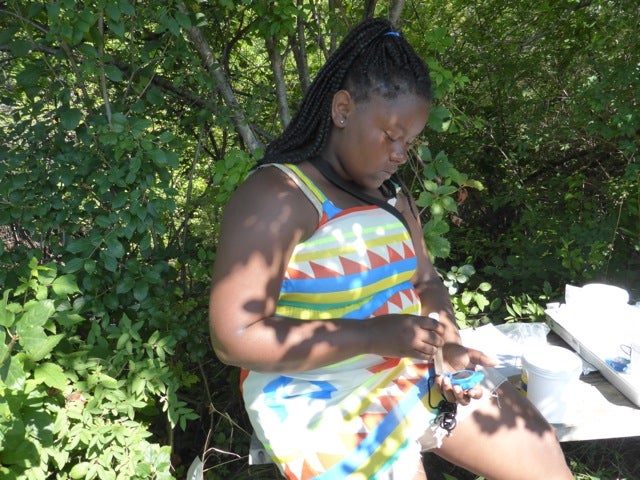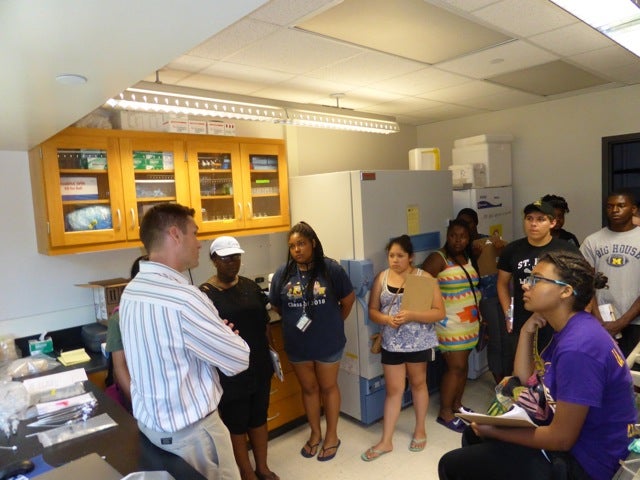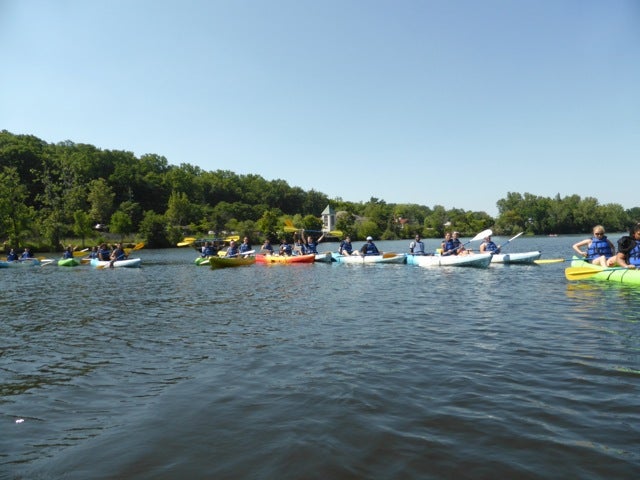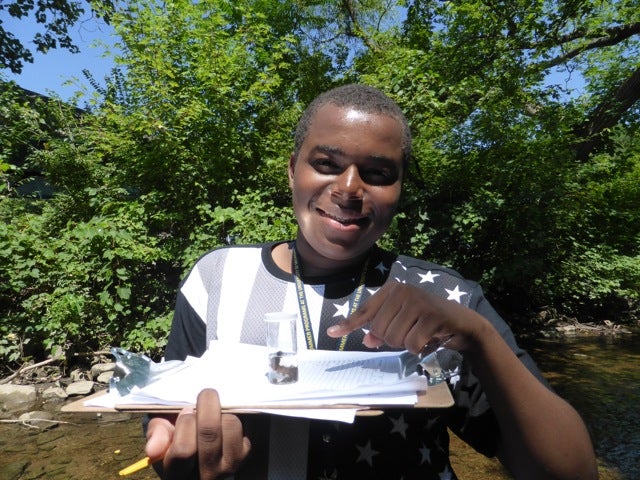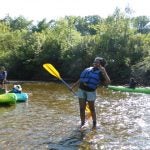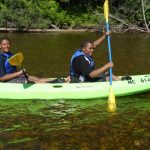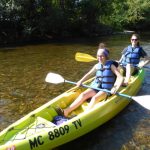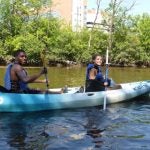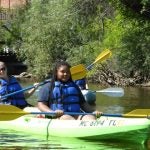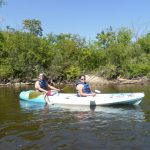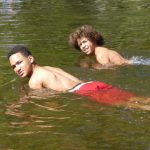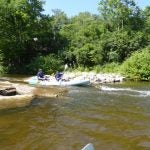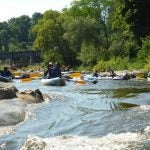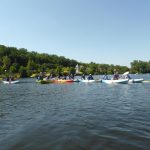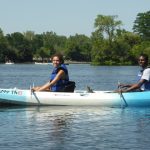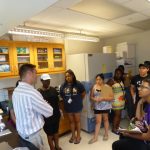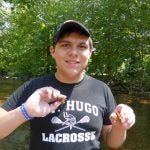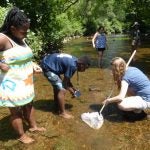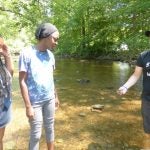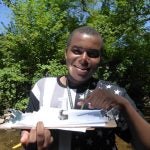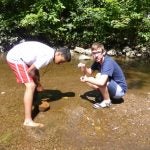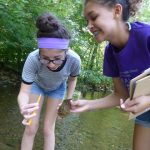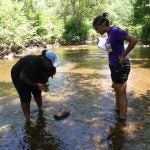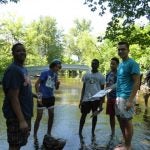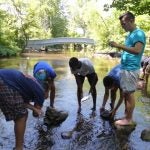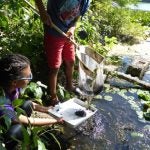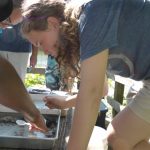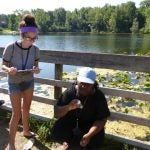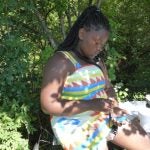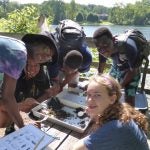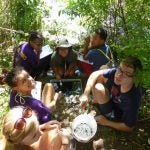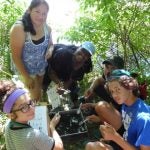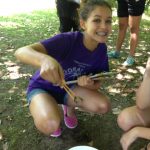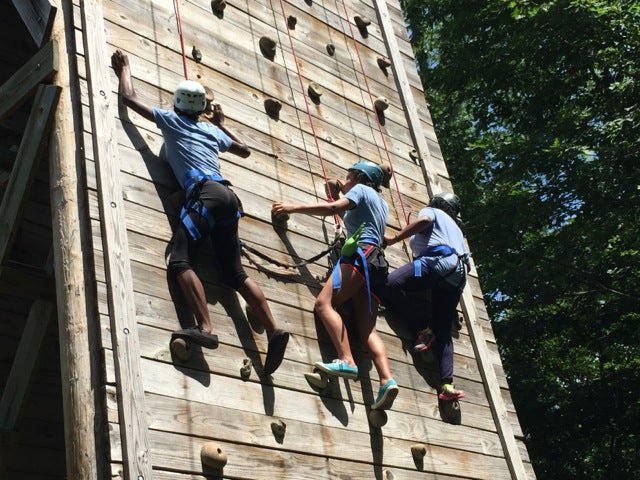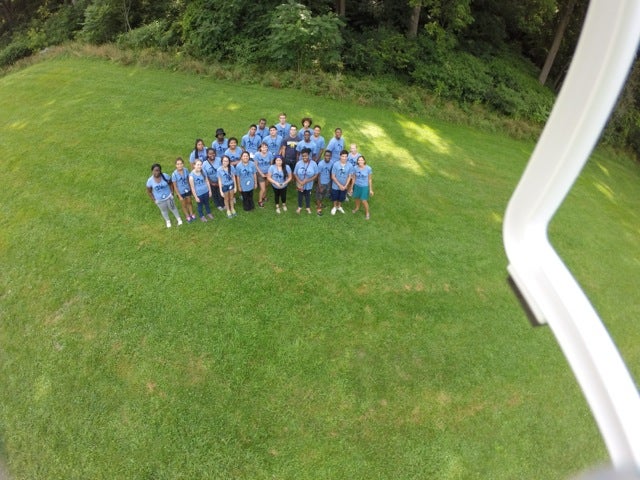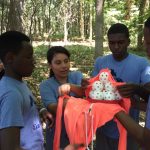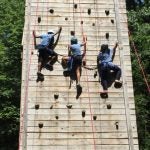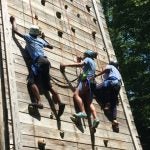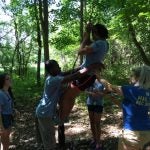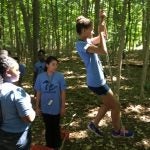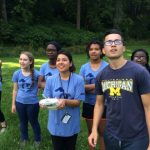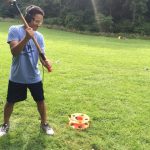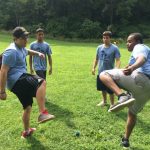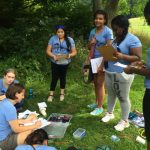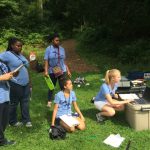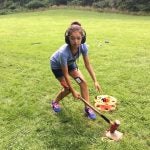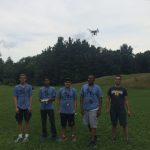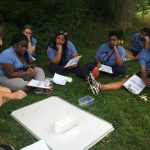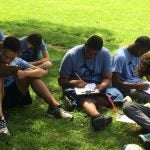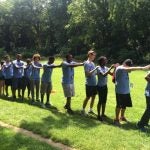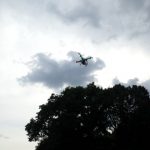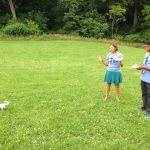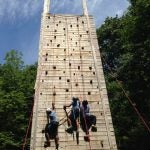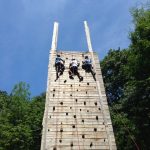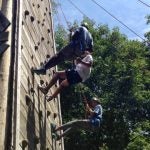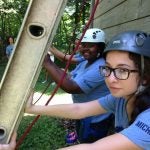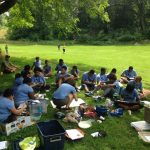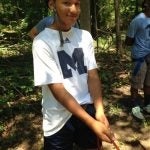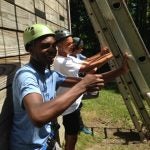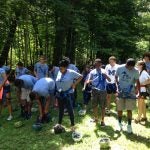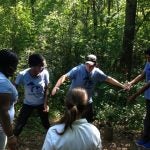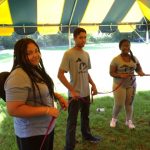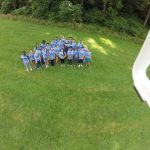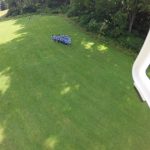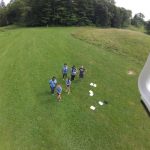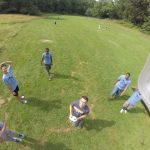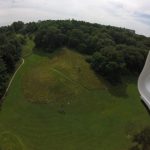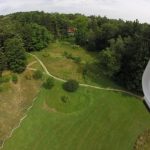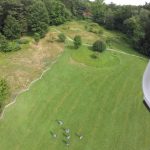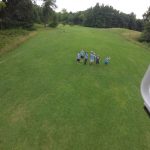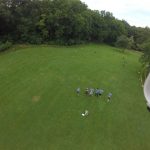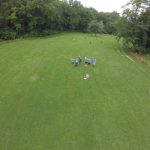We recently launched our new high-altitude weather balloon with our incoming class of Earth Camp students who spent one week this summer on campus and at Sleeping Bear Dunes. The high-altitude weather balloon was part of an NSF grant awarded to Chris Poulsen and his postdoc Chris Skinner to be used during our outreach activities.
The high-altitude weather balloon system consists of a latex helium balloon, a parachute, a payload box for experiments and cameras, a waterproof SPOT tracking device, and a control module that provides real-time altitude, temperature, humidity, vertical velocity, horizontal velocity, spin rate, turbulence, pressure, heading, GPS coordinates, and battery life data. Our modified version also included our mascot – the stuffed animal Michigan Bear. The system rises up to approximately 100,000 feet until the latex balloon bursts, at which point the parachute opens up when it starts falling to the ground.
Chris S. started checking the weather and plotting launch and landing sites a week out and picked Sunday, August 7th as our launch date. The plan was to launch near Lansing, MI so the balloon would land just north of Ann Arbor in Brighton, MI.

Figure 1: projected flight path – the red dot is the burst site
The skies were clear, there was very little surface wind, and the Earth Camp students were excited. Everything was perfect for a launch, except the jet stream was rip-roaring strong. This means a longer horizontal travel distance for the balloon, hence the long drive to Lansing to launch it. The day before our launch, as we were going through our preparations, Chris’s main concern seemed to be the screaming fast Jet Stream.
“Jenna, just make sure we don’t underfill the balloon with helium”
“We just have to make sure we fill it with the right amount of helium, or even go over a bit”
“If we underfill with helium, the balloon will rise too slowly and get stuck in the jet stream – it will end up in the lake.”
“It’s better to overfill, rather than underfill the balloon with helium”
Launch day arrived, and I promptly proceeded to (under)fill the balloon with helium. The students released it, we watched it rise, and Chris turned to me and said “it’s rising a lot slower than I thought it would.”
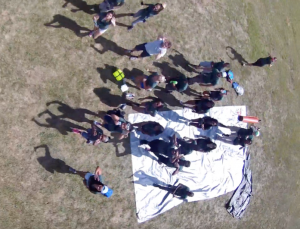
Figure 2: photo taken from the weather balloon of the students watching the launch
We hopped in our vans (which in high-altitude ballooning lingo are now called “Chase Vehicles”) and started driving towards Brighton for recovery. Chris was tracking the balloon real time and it was rising and heading in the right direction – we were just way ahead of it. We got to the targeted landing site and compared our real-time data to previous high-altitude balloon launches – our balloon was rising at ¼ of the minimum rate it was supposed to be due to the low helium amount – this was going to be a long day. The students headed off to their next activity and Chris and I holed up in our makeshift control room. Michigan Bear was on a wild, international, adventure and we were determined to get him back (along with thousands of dollars of electronic equipment).
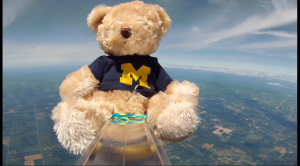
Figure 3: Michigan Bear in space
Our predictions of the balloon’s landing site were varying wildly – first we thought it might end up all the way in Pennsylvania, then we thought Columbus, OH, then we were sure it was going to be the middle of Lake Erie. Eventually, Point Pelee National Park – a small peninsula in Canada jutting into Lake Erie – was determined to be the likely landing point. Then we lost contact with our emergency SPOT beacon at 70,000 feet, and the battery pack on the control module died and we lost our real-time GPS tracking. Our balloon was being carried with the jet stream and we had no idea where it was.
We contacted Point Pelee and they immediately had a high-interest of followers/commenters on their Facebook page after they posted this:
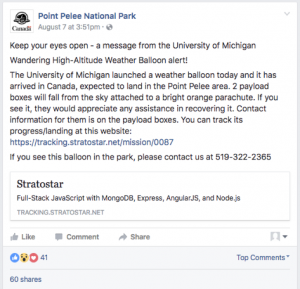
Our battery pack was dead, so our GPS was not going to turn back on, but after numerous google searches, we were hopeful the SPOT emergency beacon device would turn back on when it got to a lower elevation. I’m pretty sure this is the closest feeling I will ever have to sitting in a NASA control room waiting for my rover to land on Mars. Chris S. was pacing, I was clicking refresh on our SPOT page every 5 seconds – then the alert arrived: “SPOT Trace has detected that the asset has moved”.
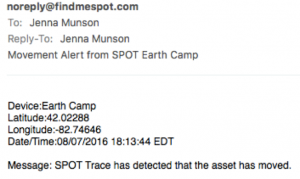
We checked the map – it looked like our system had landed right on the beach. We zoomed in, and OH NO!, it landed 50 yards off the beach in Lake Erie. We watched the SPOT updates track it as it slowly moved with the longshore current.

I decided to do what any self-respecting Minnesotan would and I called a fisherman from the port near where it landed. He seemed fairly skeptical of my account:
“um, hi. I am calling from Michigan and we launched a balloon up into space and it just fell back to Earth with a bright orange parachute and landed right offshore from your fishing charter location. I can see it on Google Maps and it right offshore of the huge mansion with the jetties in front of it”.
He sounded amused and told me to call back in 15 minutes. I did, and now he sounded excited. He had called a friend who lived on the bluff and could see the parachute and the payload boxes floating in the water. Chris drove over to Canada, met Jon of Chante Charters who had gone out in his boat to recover the system, and brought everything home.
The next day the students got to see the photos taken from the onboard cameras, as well as analyze the launch data. They were completely engrossed, thought the story of the international journey was really cool, and were posting about the launch on all their social media accounts. An all-around success! The students learned that in science, things rarely turn out like you expect, but you learn from your mistakes and keep moving on. We got great data, amazing pictures, learned a lot about the atmosphere, and most importantly, the students were excited about the whole outdoor, hands-on, scientific experience.
If you want to look at our launch data, you can find everything here: https://tracking.stratostar.net/mission/0087
